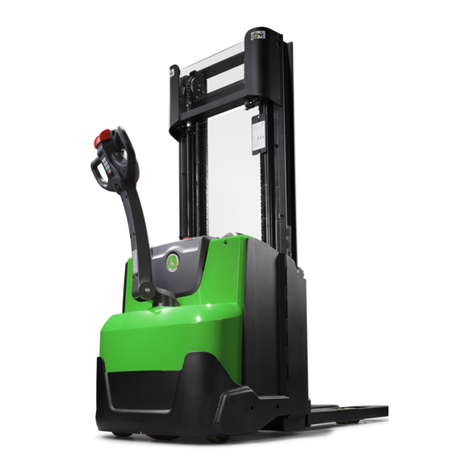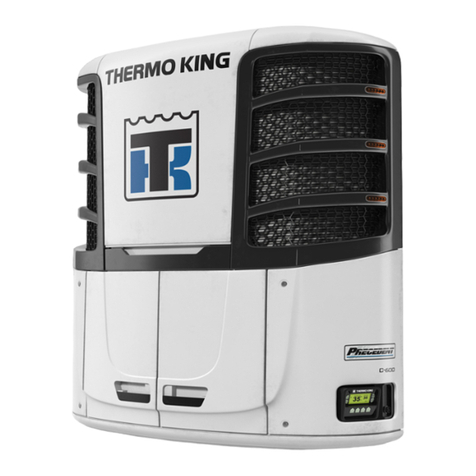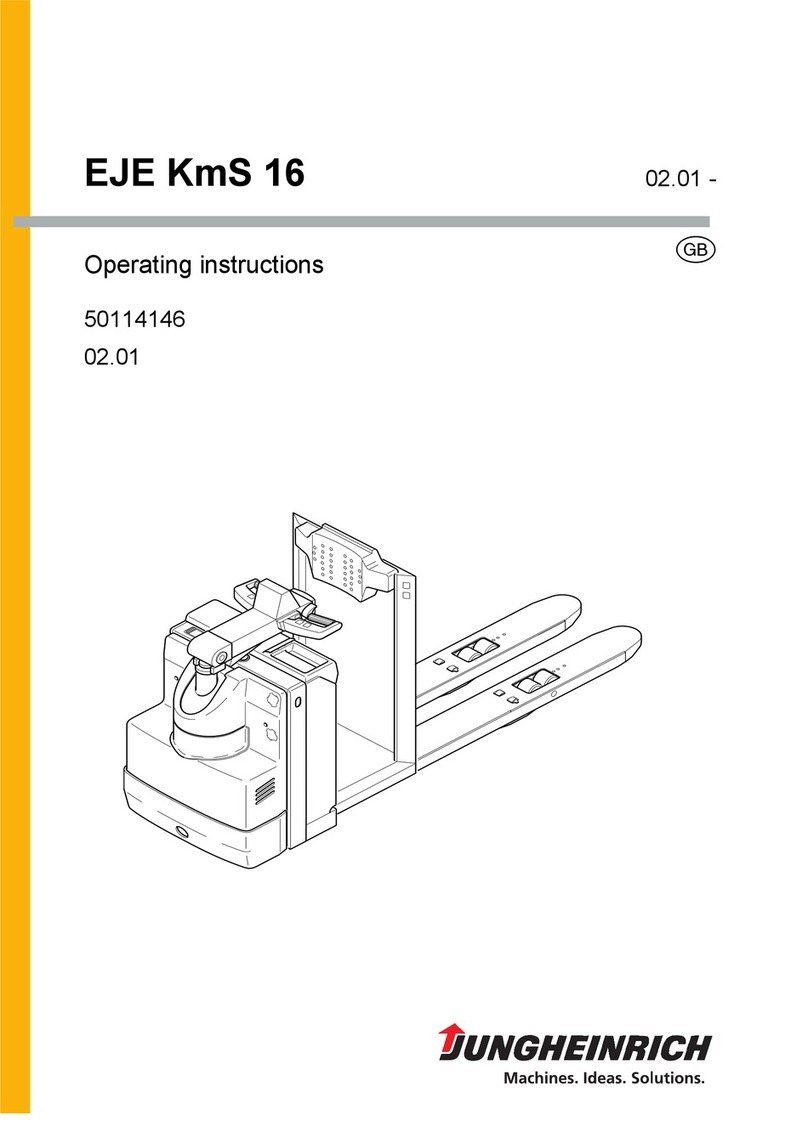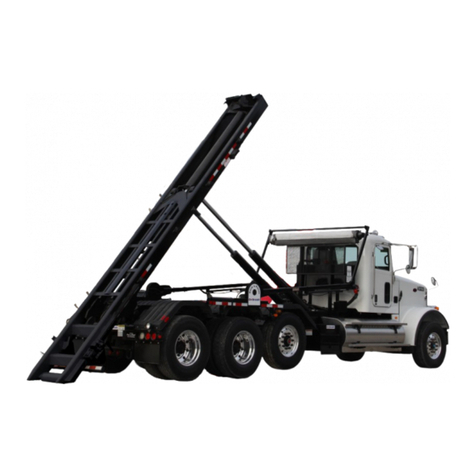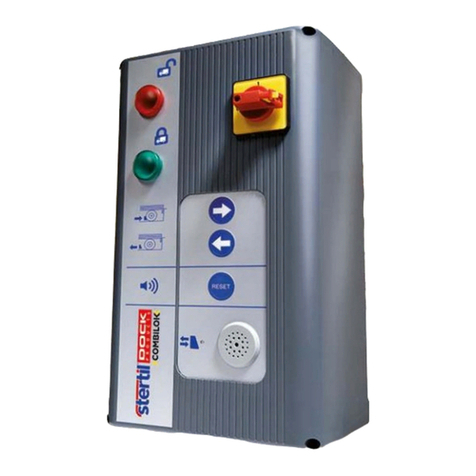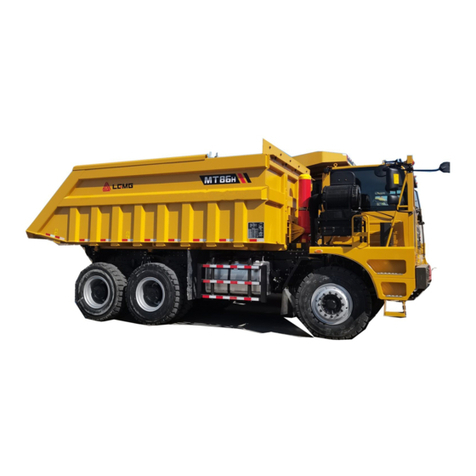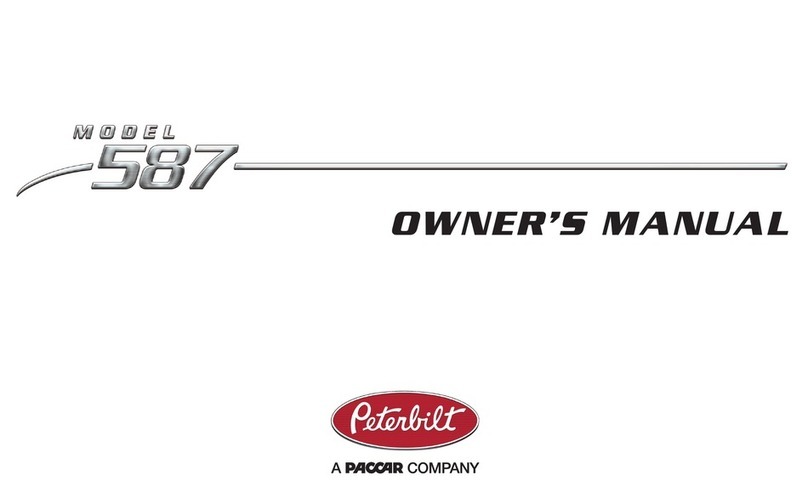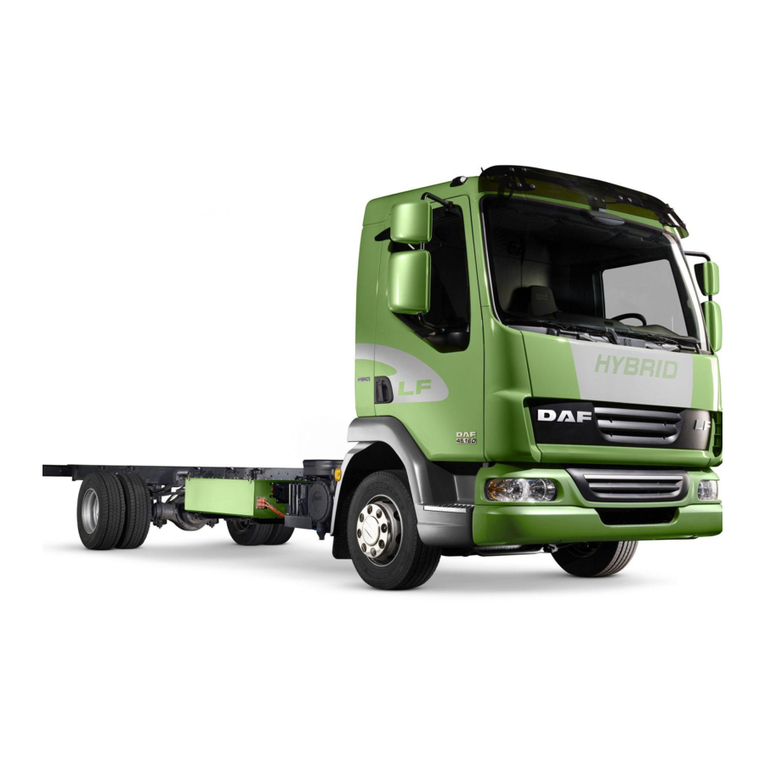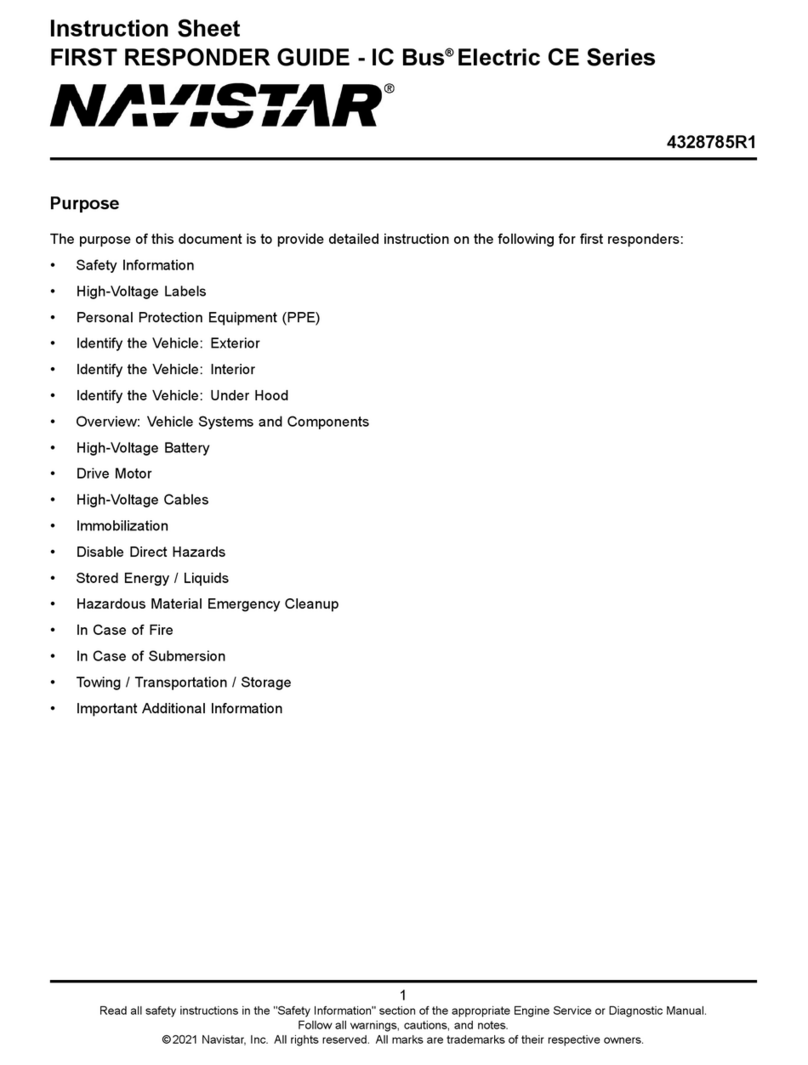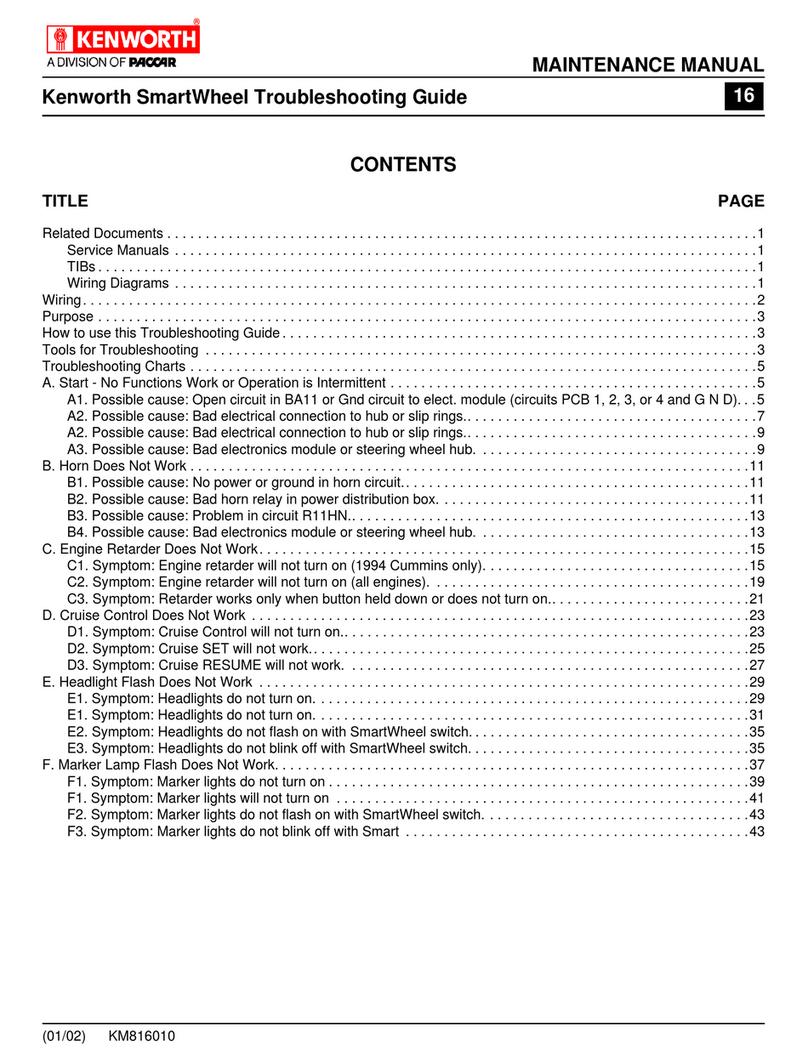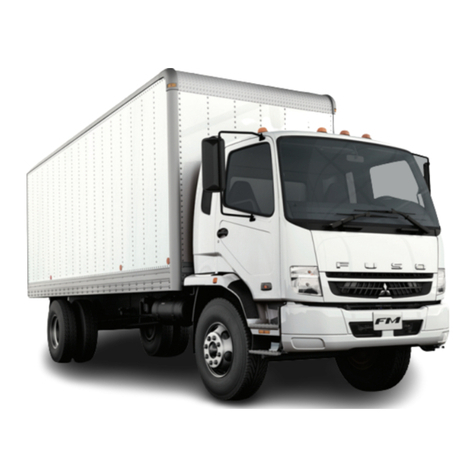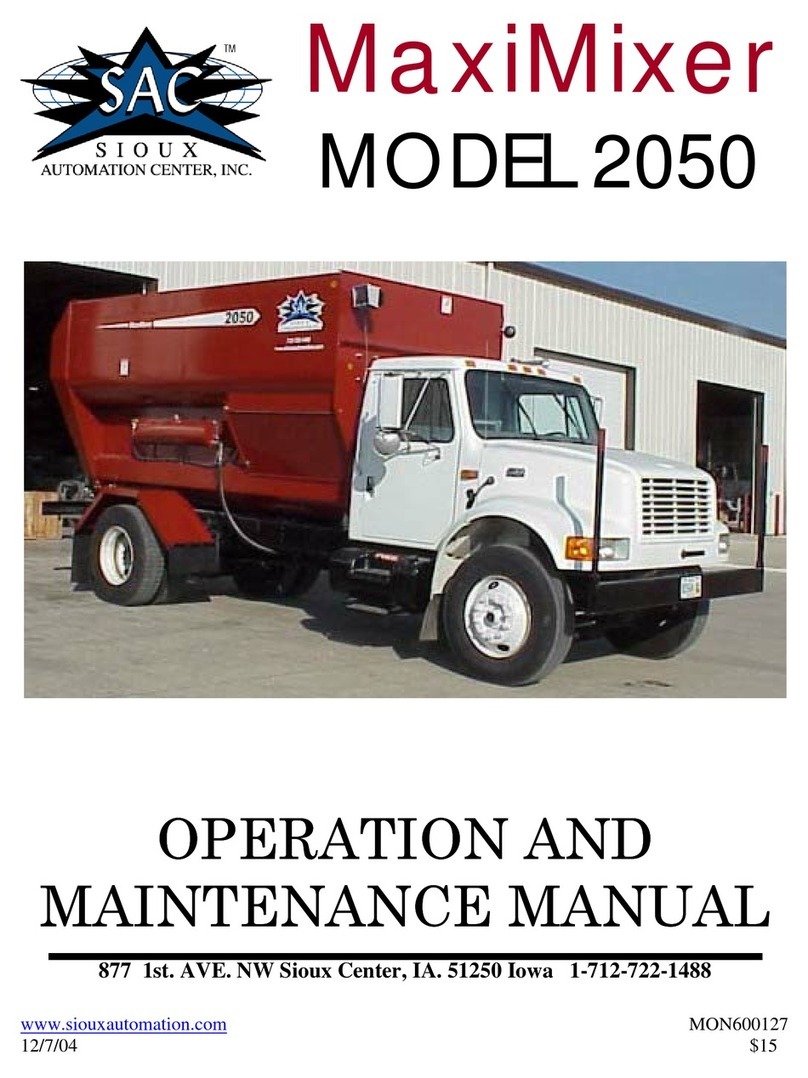Noblelift PS E12BSL manual

-
Version 10/2020
PSE12BSL/PSE12NSL-SMS-001-EN
xyz
WARNING
Do not use the electric truck before reading
and understanding these operating
instructions.
NOTE:
•Please check the designation of your
present type at the last page of this
document as well as on the ID-plate.
•Keep for future reference.
INSTRUCTION HANDBOOK
Electric Stackers
PS E12BSL / PS E12NSL

1

2
FOREWARD
Before operating the electric stacker, read this ORIGINAL INSTRUCTION HANDBOOK carefully and
understand the usage of the truck completely. Improper operation of the truck may create a danger
situation. This handbook describes the usage of different electric stackers. When operating and
servicing the truck, make sure, that it applies to your type.
Keep this handbook for future reference. If this or the warning/caution labels are damaged or got lost,
please contact your local dealer for replacement.
This truck complies with the requirements according to EN 3691-1 (Industrial trucks - safety
requirements and verification, part 1), EN 12895 (Industrial trucks - electromagnetic compatibility),
EN 12053 (Safety of industrial trucks- test methods for measuring noise emissions), EN 1175-1
(Industrial truck safety –electrical requirements), assumed the truck is used according to the described
purpose.
The noise level for this machine is < 70 dB(A) according to EN 12053.
ATTENTION:
•Environmentally hazardous waste, such as batteries, oil and electronics, will have a
negative effect on the environment or health, if handled incorrectly.
•The waste packages should be sorted and put into solid dustbins according to the
materials and be collected disposal by local special environment protection bureau. To
avoid pollution, it’s forbidden to throw away the wastes randomly.
•To avoid leaking during the use of the products, the user should prepare some
absorbable materials (scraps of wooden or dry duster cloth) to absorb the leaking oil in
time. To avoid second pollution to the environment, the used absorbable materials
should be handed in to special departments in terms of local authorities.
•Our products are subject to ongoing developments. The information written in this
handbook is provided as reference for operating and servicing the stacker and may vary
in terms of description of particular features of the truck.
NOTE: On this manual, the left sign means warning and danger, which can lead to
death or serious injury if not followed.
Copyright
The copyright remains with the company, mentioned on the CE- certificate at the end of this document or,
if sold within the USA, with the company, mentioned on the company sticker.

3
TABLE OF CONTENTS
1. CORRECTAPPLICATION ................................................................................................................. 5
2. DESCRIPTION OF THE STACKER................................................................................................... 6
a. Overview of the main components................................................................................................. 6
b. Main technical data......................................................................................................................... 6
c. Description of the safety devices and warning labels (Europe and other, except USA)................ 8
d. Identification plate........................................................................................................................... 9
3. WARNINGS, RESIDUAL RISK AND SAFETY INSTRUCTIONS .................................................... 10
4. COMMISSIONING, TRANSPORTING, DECOMMISSIONING ........................................................11
a. Commissioning ..............................................................................................................................11
b. Lifting/ transportation .....................................................................................................................11
c. Decommissioning.......................................................................................................................... 12
5. DAILY INSPECTION......................................................................................................................... 13
6. OPERATION INSTRUCTIONS ........................................................................................................ 14
a. Parking.......................................................................................................................................... 14
b. Residual lift diagram ..................................................................................................................... 14
c. Lifting............................................................................................................................................. 15
d. Lowering........................................................................................................................................ 15
e. Travelling....................................................................................................................................... 15
f. Steering......................................................................................................................................... 16
g. Braking.......................................................................................................................................... 16
h. Malfunctions.................................................................................................................................. 17
i. Emergency.................................................................................................................................... 17
j. Fork adjustment............................................................................................................................ 17
k. Fork replacement.......................................................................................................................... 17
l. Leg adjustment ............................................................................................................................. 18
7. PIN-CODE PANEL ........................................................................................................................... 19
a. Introduction ................................................................................................................................... 19
b. Main parameters........................................................................................................................... 19
c. Main functions............................................................................................................................... 19

4
8. BATTERY CHARGINGAND REPLACEMENT................................................................................ 20
a. Replacement................................................................................................................................. 20
b. Battery Indicator............................................................................................................................ 21
c. Charging........................................................................................................................................ 22
9. REGULAR MAINTENANCE............................................................................................................. 23
a. Maintenance checklist................................................................................................................... 23
b. Lubricating points.......................................................................................................................... 24
c. Check and refill hydraulic oil......................................................................................................... 24
d. Checking electrical fuses.............................................................................................................. 25
e. Removing, reattaching guarding................................................................................................... 25
10. TROUBLE SHOOTING .................................................................................................................... 26
11. WIRING/ CIRCUIT DIAGRAM.......................................................................................................... 28
a. Electrical circuit diagram............................................................................................................... 28
b. Hydraulic circuit............................................................................................................................. 30
12. SPECIALIZED STIPULATIONS FOR THE US- AMERICAN MARKET........................................ 31
a. Foreword/ Compliance.................................................................................................................. 31
b. Description warning labels (only US- market).............................................................................. 32
c. Technical data for US market........................................................................................................ 34
13. DECLARATION OF CONFORMITY (valid, if sold within the EU).................................................... 37

5
1. CORRECT APPLICATION
It is only allowed to use this electric stacker according to this instruction handbook.
The trucks described in this handbook are self-propelled pedestrian controlled electric power stackers,
with electrically powered lifting function. The trucks are designed for stacking operations in dedicated
racking by lifting and lowering the palletized loads up to the desired lifting heights.
A wrong usage can cause human injuries or can damage equipment.
The operator/ the operating company has to ensure the correct usage and has to ensure, that this truck
is used only by staff, which is trained and authorized to use this truck.
The truck has to be used on substantially firm, smooth, prepared, level and adequate surfaces. The truck
is intended to be used for indoor applications with ambient temperatures between +5C and + 40C and
for various transportation applications without crossing permanent obstacles or potholes. The work on
ramps is allowed if ramp is not exceeding the allowed angle. While operating, the load must be placed
approximately on the longitudinal centre plane of the truck.
Lifting or transporting people is forbidden.
If used on tail lifts or loading ramps, please ensure that these are used correctly according to the
operating instructions.
The capacity is marked on capacity sticker as well on the Identification plate. The operator has to
consider the warnings and safety instructions.
Operating lighting must be minimum 50 Lux.
Modification
No modifications or alterations to this stacker which may affect, for example, capacity, stability or safety
requirements of the truck, shall be made without the prior written approval of the original truck
manufacturer, its authorized representative, or a successor thereof. This includes changes affecting, for
example braking, steering, visibility and the addition of removable attachments. When the manufacturer
or its successor approve a modification or alteration, they shall also make and approve appropriate
changes to capacity plate, decals, tags and operation and maintenance handbooks.
Only in the event that the truck manufacturer is no longer in business and there is no successor in the interest to the business, may the
user arrange for a modification or alteration to a powered industrial truck, provided, however, that the user:
a) arranges for the modification or alteration to be designed, tested and implemented by an engineer(s) expert in industrial trucks and
their safety,
b) maintains a permanent record of the design, test(s) and implementation of the modification or alteration,
c) approves and makes appropriate changes to the capacity plate(s), decals, tags and instruction handbook, and
d) affixes a permanent and readily visible label to the truck stating the manner in which the truck has been modified or altered, together
with the date of the modification or alteration and the name and address of the organization that accomplished those tasks.
By not observing these instructions, the warranty becomes void.

6
Fig. 1: Overview main components
2. DESCRIPTION OF THE STACKER
a. Overview of the main components
1. Mast
2. Load Backrest, Fork
carriage
3. Fork
4. Load roller assembly
5. Leg
6. Chassis
7. Driving wheel assembly
8. Protective cover (tiller)
9. Steering roller assembly
10. Cover
11. Cover
12. Main cover
13. Cover
14. Cover
15. Protective board
16. Buckle
17. Protective board
18. Belly button
19. Tiller
20. Pin-code panel
21. LCD
22. Emergency button
23. Spring cord
24. Button switch (Lithium)
25. Panel Charging LED
26. USB port (Optional)
27. Panel

6
b. Main technical data
Fig. 2: Technical data

7
Table1: Main technical data for standard version
Type sheet for industrial truck acc. to VDI 2198
General data
1.2
Manufacturer`s type designation
PS E12BSL
PS E12NSL
3600
1.3
Power (battery ,diesel, petrol, gas, manual)
Battery
1.4
Operator type
Pedestrian
1.5
Load Capacity / rated load
Q(t)
1.2
1.6
Load centre distance
c(mm)
600
1.8
Load distance ,centre of drive axle to fork
x(mm)
674
1.9
Wheelbase
Y(mm)
1111
Weight
2.1
Service weight
kg
830
785
2.2
Axle loading, laden front/rear
kg
730 / 1300
705 / 1280
2.3
Axle loading, unladen front/rear
kg
620 / 210
585 / 200
Tires, chassis
3.1
Tires
Polyurethane (PU)
3.2
Tire size, front
x w (mm)
Φ210 x 70
3.3
Tire size, rear
x w (mm)
Φ84 x 93
3.4
Additional wheels(dimensions)
x w (mm)
Φ100 x 40
3.5
Wheels, number front/rear(x=driven wheels)
1x + 2 / 2
3.6
Track, front
b10 (mm)
520
Dimensions
4.2
Lowered mast height
h1(mm)
2290
4.3
Free Lift height
h2(mm)
-
4.4
Lift height
h3 (mm)
3514
4.5
Extended mast height
h4 (mm)
4100
4.9
Height of tiller in drive position min./ max.
h14 (mm)
710 / 1150
4.15
Height, lowered
h13 (mm)
50
4.19
Overall length
l1(mm)
1790
4.20
Length to face of forks
l2(mm)
640
4.21
Overall width
b1 (mm)
800 / (1181 / 1281 / 1381 / 1481)
4.22
Fork dimensions
s/e/l (mm)
40 / 100 / 1150
4.25
Width across forks
b5 (mm)
252-800
4.32
Ground clearance, centre of wheelbase
m2(mm)
40
4.33
Aisle width for pallets 1000X1200
crossways
Ast (mm)
2228
4.34
Aisle width for pallets 800X1200 lengthways
Ast (mm)
2206
4.35
Turning radius
Wa (mm)
1345
Performance
5.1
Travel speed, laden/ unladen
Km/h
4.2 / 4.5
5.2
Lift speed, laden/ unladen
m/s
0.11 / 0.16
5.3
Lowering speed, laden/ unladen
m/s
0.13 / 0.11
5.8
Max. gradeability, laden/ unladen
%
4 / 10
5.10
Service brake
Electromagnetic
E
l
e
c
t
r
i
c
6.1
Drive motor rating S2 60min
kW
0.65

8
6.2
Lift motor rating at S3 7.5%
kW
2.2
6.3
Battery acc. to DIN 43531/35/36 A, B, C,
no
no
6.4
Battery voltage, nominal capacity K5
V/Ah
2 x 12 / 851)
24 / 60
6.5
Battery weight
kg
2 x 272)
19
6.6
Energy consumption acc: to VDI cycle
Kwh/h
0.8
Oth
er
8.1
Type of drive control
DC
8.4
Sound level at driver’s ear acc. to EN 12053
dB(A)
<70
1) Option: 2x12V/106Ah
2) 2) 2x12V/106Ah : 2 x 34
Type
Lowered mast height
h1(mm)
Free Lift height
h2(mm)
Lift height
h3(mm)
Extended mast height
h4(mm)
One stage
mast
1940
1514
1514
2100
2340
1914
1914
2500
Two stage
mast
1790
-
2514
3100
1940
-
2814
3400
2090
-
3114
3700
2290
-
3514
4100
c. Description of the safety devices and warning labels (Europe
and other, except USA)
A Crane hook label
B Warning decal: Do not step under or on the forks
C Residual lift capacity sticker
D Never reach through
E Identification plate (ID-plate)
F Sticker to read and follow these instructions
G Sign of filling point
H “No passengers” decal
The truck is equipped with an emergency switch (22) which
stops all lifting-, lowering-, driving- functions and engages
the failsafe electromagnetic brake when it is pressed. By
pull this button out; the truck can be operated after the
controller checked the functions. Before operating, type the
password on pin-code panel and press the √button. To
prevent against unauthorized access, press emergency
switch (22) or press the X button of pin-code panel.
The truck is equipped with a safety (belly) button (18)
which switches the driving function away from the
operator, if the truck travels towards the operator and the tiller is activated in the tillers operating zone.
Follow also the instructions given on the decals. Replace the decals if they are damaged or missing.
Fig. 3: Safety and warning labels

9
d.Identification plate
1 Designation, type
2 Serial number
3 Rated capacity in kg
4 Supply voltage in V
5 Own mass (self weight) in kg without battery
6 Name and address of manufacturer)
7 Battery weight minimum/ maximum
8 Nominal power in kW
9 Load center distance
10 Manufacturing date
11 Option
Fig. 4: Identification plate
1
2
4
5
3
7
If sold to the EU, here the
place of the CE marking
6
8
9
10
11

10
3. WARNINGS, RESIDUAL RISK AND SAFETY INSTRUCTIONS
DO NOT
•Put foot or hand under or into the lifting mechanism.
•Allow other person than the operator to stand in front of or behind the truck when it is
moving or lifting/lowering.
•Overload the truck.
•Put foot in front of the wheels, injury could result.
•Lift people. People could fall down and suffer severe injury.
•Push or pull loads; use drawbar
•Side or end load. Load must be distributed evenly on the forks.
•Use the truck with unstable, unbalanced not stable load.
•Use the truck without following the instructions.
•Lifted loads could become unstable at wind forces. In the case of wind forces do not
lift the load if there is any influence to the stability
•Do not use the truck without help if load is causing insufficient visibility. Operation
without help of additional people may result in crushes or injuries. Always make sure
the transportation of load is safe.
•Do not operate the truck with removed covers or the apron.
Watch difference in floor levels when driving. Load could fall down or the truck could get uncontrollable.
Keep watching the condition of load. Stop operating the truck if load becomes unstable.
Brake the truck and activate the emergency button (22) by pushing when sliding load on or off the truck.
If the truck has any malfunctions, follow chapter 10.
Practice maintenance work according to regular inspection. This truck is not designed to be water
resistant. Use the truck under dry condition. Prolonged continuous operation might cause damage of the
power pack. Stop operation if temperature of hydraulic oil is too high.
•When operating the electric stacker, the operator has to wear safety shoes.
•The truck is intended to be used for indoor applications with ambient temperatures
between +5C and + 40C.
•The operating lighting must be minimum 50 Lux.
•To prevent unintended sudden movements when not operating the truck (i.e. from
another person, etc.), press emergency switch (22) or press the X button of pin-code
panel.

11
4. COMMISSIONING, TRANSPORTING, DECOMMISSIONING
a. Commissioning
Table 2: Commissioning data
Type
PSE12BSL / 3600
PSE12NSL / 3600
Commissioning
weight [kg]
865
835
Dimensions
[mm]
3600
3600
After receiving our new stacker or for re-commissioning you have to do following before (firstly)
operating the truck:
•Check if are all parts included and not damaged
•Make sure the tiller is assembled correctly (electrical socket is connected and fixed with two plastic
clamps, circlip of the axle is installed)
•Check that battery is charged (follow chapter 8)
•Do the work according to the daily inspections as well as functional checks.
b. Lifting/ transportation
For transporting, remove the load, lower the forks to the lowest position and fix the truck safe with
dedicated lifting gear according to the following figures.
Lifting
USE DEDICATED CRANEAND LIFTING EQUIPMENT
DO NOT STAND UNDER THE SWAYING LOAD
DO NOT WALK INTO THE HAZARDOUS AREA DURING LIFTING
Park the truck securely and lash the truck according to the points identified in Fig. 5. Lift the truck to its
destination and place the truck securely before removing the lifting gear. The lashing points are
according to the Fig. 5.
Fig. 5: Lifting with a crane
Fig. 6: Fixing points

12
Transportation
DURING TRANSPORTATION ON A LORRY OR TRUCK ALWAYS FASTEN THE
TRUCK SECURELY
Lower the forks and park the truck securely.
Fasten the truck according to Fig. 6 by fixing dedicated lashing belts to chassis, Fork carriage and mast,
and fasten the other side at the transporting truck.
c. Decommissioning
For storage, remove the load, lower the truck to the lowest position, grease all in this handbook
mentioned greasing points (regular inspection), and eventually protect the truck against corrosion and
dust. Remove the batteries and jack the truck safely, so that there will be no flattening after storage.
For final decommissioning hand the truck to a designated recycling company. Oil, batteries and electric
components must be recycled due to legal regulations.

13
5. DAILY INSPECTION
This chapter describes pre-shift checks before putting the truck into operation.
Daily inspection is effective to find the malfunction or fault on this truck. Check the truck on the following
points before operation.
Remove load from truck and lower the forks.
DO NOT USE THE TRUCK IF ANY MALFUNCTION IS FOUND.
•Check for scratches, deformation or cracks.
•Check if there is any oil leakage from the cylinder.
•Check the smooth movement of the wheels.
•Check the function of driving in both directions (section 6e).
•Check the functions of braking by activation of tiller arm sensor, reversing of driving
buttons, release of driving buttons and of the safety (belly) button (section 6g).
•Check the function of driving with tiller in its vertical position (section 6e).
•Check the function of the emergency brake by activating the emergency button.
•Check the lifting and lowering functions by operating the buttons (section 6c and 6d).
•Check the function of steering by turning the tiller from one end position to the other
one. The steering should be smooth, without jerks or abnormal sound.
•Check if all bolts and nuts are tightened firmly.
•Visual check if there are any broken electric wires.
•If supplied with a backrest extension, check it for damages and correct assembling.
•Check the presence of warning stickers and signs (section 2c)
If supplied with a backrest extension, check it for damages and correct assembling

14
Fig. 9: Residual lift diagram
6. OPERATION INSTRUCTIONS
BEFORE OPERATING THIS TRUCK, PLEASE FOLLOW THE WARNINGS AND
SAFETY INSTRUCTIONS (CHAPTER 3).
Make sure, that the load is palletized and stable and that the daily inspection is carried out.
PS E12BSL
Pull out the emergency button (Fig.1, 22), type the password on pin-code panel and press √button to
start the truck.
Press the horn button (Fig.7, 29) to activate the audible warning signal.
PS E12NSL
Pull out the emergency button (Fig.1, 22), Press the button switch, and a green light will appear on the
switch (Fig.8), type the password on pin-code panel and press √button to start the truck. Truck can
also be activated with RFID access card.
Press the horn button (Fig.7, 29) to activate the audible warning signal.
a. Parking
DO NOT PARK THE TRUCK ON INCLINED SURFACES
The truck is equipped with an electromagnetic failsafe stopping and parking
brake.
PS E12BSL: Always lower the forks fully. Press the emergency switch (22).
PS E12NSL: Always lower the forks fully. Press the button, green LED ring is
off (Fig.8), and press the emergency switch (22).
b. Residual lift diagram
The residual lift diagram indicates the maximum capacity Q [kg] for a given
load centre c [mm] and the corresponding lift height H [mm] for the truck with
horizontal load.
Fig.7: Tiller operating controls
Fig.8: Button switch

15
The white markings on the mast indicate if the specific lifting limits reached. For instance with a load
centre of gravity distance c of 600 mm and a maximum lift height H of 3600 mm, the max. Capacity Q is
1000 kg.
c. Lifting
DO NOT OVERLOAD THE TRUCK! THE MAXIMUM
CAPACITY IS 1200kg.
LIFT ONLY CAPACITIES ACCORDING TO THE
RESIDUAL LIFT DIAGRAM.
Travel with the lowered forks fully underneath the pallet and press
the lifting button (Fig. 7, 30) until you reached the desired lifting
height.
d. Lowering
If the forks are in the racking, firstly travel out of the racking carefully with or without the pallet. By
travelling out of the racking, take care that the forks are not touching the racking.
Press the lowering button (Fig. 7, 31) carefully.
Lower the load until the forks are clear of the pallet, then drive the truck carefully out of the load unit.
e. Travelling
TRAVEL ON INCLINES ONLY WITH THE LOAD FACING UPHILL.
DO NOT TRAVEL ON INCLINES MORE THAN SPECIFIED WITH THE TECHNICAL
DATA.
TRAVELLING IS ONLY ALLOWED IF THE FORKS ARE LOWERED DOWN TO THE
LIFTING POINT (<300MM).
Fig.10: Load facing uphill
Fig.11: Operating direction

16
After starting the truck by activation from Pin-code panel carefully move the tiller to the operating zone
(‘F’, fig.11).
Turn the accelerator button to the desired direction forward ‘Fw.’ Or backwards ‘Bw.’(fig. 11).
Control the travelling speed by moving the accelerator button (28) carefully until you reached the desired
speed. If you move the accelerator button back to the neutral position, the controller decelerates the
truck until the truck stops. If the truck stopped, the parking brake will be engaged.
Drive carefully the truck to the destination. Watch the route conditions and adjust the travelling speed
with the accelerator- button.
Press turtle button (Fig.7, 32) to enter into slow speed mode, travel slowly by moving the accelerator
button (Fig.7, 28) , press turtle button again to return back to regular mode.
Press turtle button and hold for 2 seconds to activate driving function with tiller in its vertical position
when operating in confined areas. The driving function is active only when turtle button is pressed (the
speed is reduced); the release of turtle button will cause immediate stop. The activation of accelerator
button in time gap shorter than two seconds after the turtle button is pressed will not activate the driving
function, the activation cycle has to be repeated from the beginning.Accelerator button should remain in
neutral position till two seconds passed.
f. Steering
You steer the truck by moving the tiller to the left or right side. When travel in front direction (opposite to
direction of forks) the turning of tiller bar to right side will cause the truck turning clockwise.
g. Braking
PLEASE CHECK THE BRAKING DISTANCE WITH TRUCK BEFORE OPERATION
THE BRAKING PERFORMANCE DEPENDS ON THE TRACK CONDITIONS AND
THE LOAD CONDITIONS OF THE TRUCK
The braking function can be activated on several ways:
•By moving the accelerator button (28) back to the initial ‘0’ position or by releasing the button, the
regenerative braking is activated. The truck brakes until it stops.
•By moving the accelerator button (28) from one driving direction directly to the opposite direction,
the truck brakes regenerative until it starts traveling into the opposite direction.
•The truck brakes, if the tiller is moved up or down to the braking zones (‘B’). If the tiller is released,
the tiller moves automatically up to the upper baking zone (‘B’).The truck brakes until it stops.
•The safety (belly) button (18) prevents the operator from being crushed. If this button is activated,
the truck decelerates and/ or starts traveling into the backwards direction (‘Bw.’) for a short distance
and stops. Please consider, that this button also operates, if the truckis not traveling and the tiller is
in the operating zone.

17
h. Malfunctions
If there are any malfunctions or the truck is inoperative, please stop using the truck and activate the
emergency button (22) by pushing it. If possible, park the truck on a safe area and press the X button of
pin-code panel. Inform immediately the manager and, or call your service. If necessary, move the truck
out of the operating area by using dedicated lifting equipment. Do not tow the truck.
i. Emergency
In emergencies or in the event of tip over (or off dock), keep safe distance immediately. If possible push
the emergency button (22).All electrical functions will be stopped.
j. Fork adjustment
•Not fixed and improperly adjusted forks can lead
to dangerous accidents.
•Check if the safety bolt (33) is installed before
adjusting the forks. If the safety bolt (33) is not in
place, the truck shall be prohibited to use.
•When adjusting the fork, pay attention that the
distance between each fork and outer edge of
the holder should be same.
•Clip the positioning pin into a fix slot to avoid
accidental movement of the fork.
•Load center must be located in the middle of the
two forks.
Operation steps:
→Park the truck securely according to the regulations.
→Pulled up the positioning pin (34), make it away from the fixed slot.
→Move the forks (35) to the appropriate position.
In order to ensure the operation safety of picking process, the distance
between the forks (35) should be as large as possible, and the fork
position must be symmetrical with the center line of the fork holder. Load
center must be located in the center of the forks (35).
→Put down the positioning pin (34), move the forks until the positioning
pin clip into the fixing slot.
k. Fork replacement
•There is leg injury risk when replacing the forks.
•It’s forbidden to pull the fork to the direction of the operator.
•Move the fork in the direction away from the operator.
•In order to prevent moving down, please use crane to fix heavy forks.
•Install the safety bolt (33) after replacing the fork and check whether the position of the safety
bolt is correct.
Fig.12:Adjust the forks
Fig.13: Move the forks

18
•There is leg injury risk when replacing the forks.
•It’s forbidden to pull the fork to the direction of the operator.
Operation steps:
→Remove the safety bolt (33).
→Release fork positioning device (34).
→Move the forks to the center of fork holder and remove the forks through the groove.
l. Leg adjustment
•Not fixed and not properly adjusted legs can lead
to dangerous accidents.
•There is leg injury risk when adjusting the legs.
•Tighten the positioning bolt (39) after adjusting
the legs.
•When adjusting the legs, please pay attention
that the number of positioning holes (38)
exposed on each side of the legs should be same.
(as shown in Fig. 14, if one side has 4 positioning
holes(38), the other side should also be 4).
Operation steps:
→Park the truck securely according to the regulations.
→Turn clockwise the supporting assembly(36) on both
sides of the truck until jacking up the truck.
→Screwed out the positioning bolt (39).
→Adjust the leg (37) until the corresponding positioning hole (38) is adjusted to the underface of the
positioning bolts (39).
When adjusting the legs, please pay attention that the number of positioning holes (38) exposed on
each side of the legs should be same. (as shown in Fig. 14, if one side has 4 positioning holes(38),
the other side should also be 4).
→Screw the positioning bolt (39) tightly.
→Turn anti-clockwise the supporting assembly (36) on both sides of the truck until the supporting
assembly can’t be turned anymore.
Fig.14: Adjust the legs
This manual suits for next models
1
Table of contents
Other Noblelift Truck manuals

Noblelift
Noblelift N Series Manual

Noblelift
Noblelift PT20H manual

Noblelift
Noblelift PTE15N SC User manual
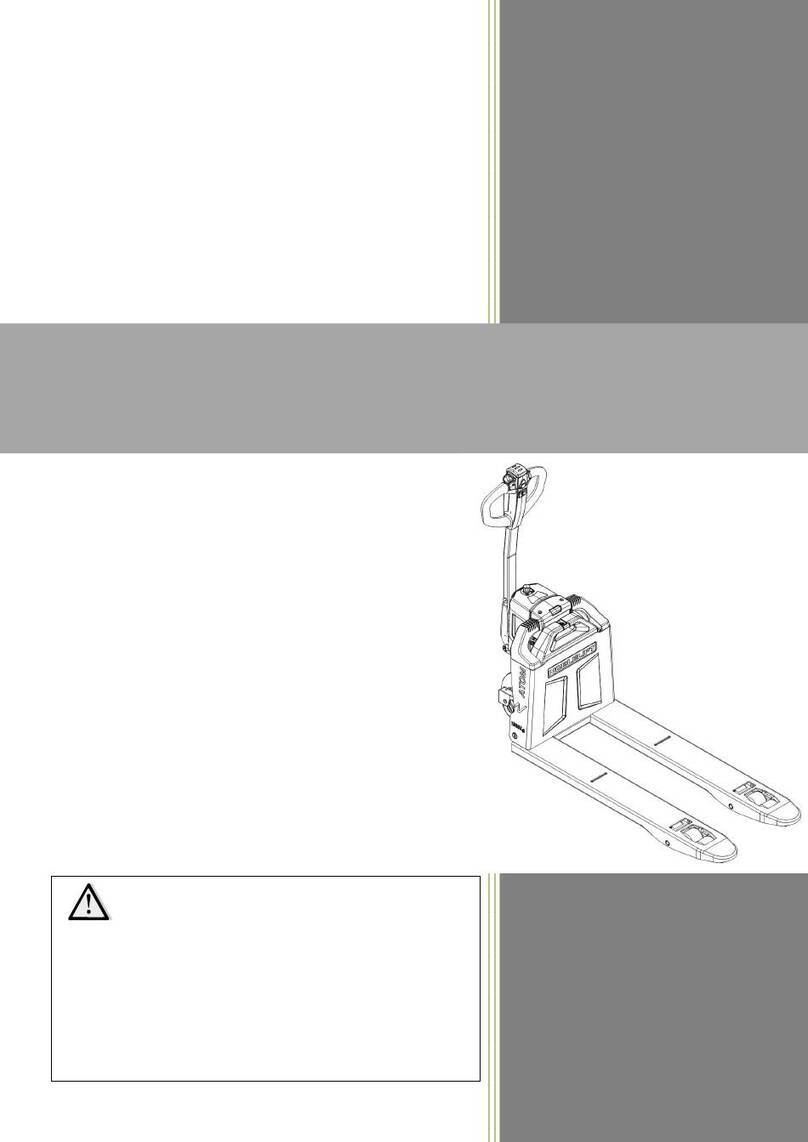
Noblelift
Noblelift PTE15Q2-B User manual

Noblelift
Noblelift PTE15Q-A User manual

Noblelift
Noblelift PS E12B User manual
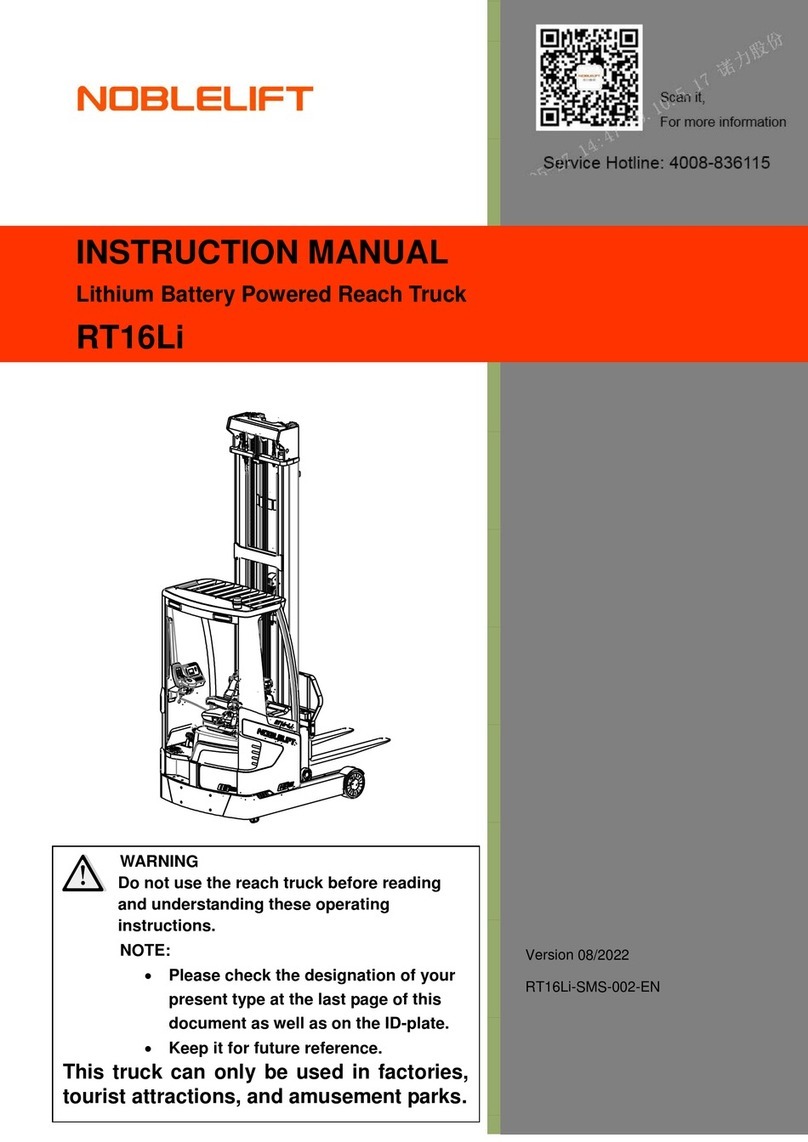
Noblelift
Noblelift RT16Li User manual

Noblelift
Noblelift RT16P User manual

Noblelift
Noblelift PTE15Q User manual

Noblelift
Noblelift FE3P16-35 N User manual





